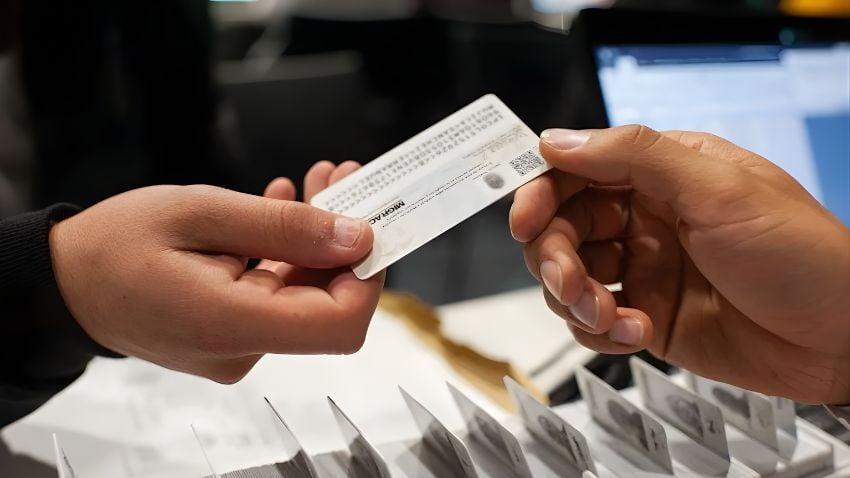The Different Types Of Residency You Need To Know
People choose the expat lifestyle for many reasons. Some seek greater personal freedom and better financial opportunities, while others want a lower...
.jpg?width=850&height=478&name=Turning%20Timber%20Into%20Wealth:%20Investing%20In%20Forestry%20With%20Your%20401(k).jpg)
4 min read
Which of these do you fear more: death or running out of money? This question might be a bit extreme, but did you know that 63% of Americans fear running out of money more than death?
The golden years, a time that many used to look forward to, have become a source of stress and uncertainty.
To make matters worse, conventional 401(k) plans just don’t cut it. Imagine investing only in stocks, bonds, and mutual funds. Why is this problematic? Because they are highly volatile, and combined with the money printed by the Fed, profits may be an illusion.
That’s why, as an experienced investor, I opt for tangible investments, such as forestry. They say money doesn’t grow on trees, but today, you will discover it is possible.
This article will delve into forestry investment through 401(k) plans, which may offer more significant returns and a more personalized investment strategy.

Forestry is a stable, inflation-resistant asset. As demand for wood rises, investing in timber can protect and grow your wealth, especially through a 401(k) rollover
Think of the most basic items in your household: tables, chairs, and various pieces of furniture. Many of these are made of wood, which comes from trees. This might sound obvious, but I want you to understand that forestry is not simply another asset. Instead, it is an essential part of our lives, and there will always be a need for it. Viewing forestry as a tangible asset provides a unique opportunity to diversify and strengthen your retirement portfolio.
My investment strategy focuses on tangible assets that appreciate over time. The same goes for other investments; for example, I’m bullish on real estate because people will always need somewhere to live or work. Forestry also meets this criterion perfectly, as demand is expected to increase in the upcoming years.
Tangible assets often increase in value along with inflation, thus preserving or even increasing their worth. Forestry investments fall into this category because timber and land value typically rise in inflationary times. While the cost of goods and services increases, the price of wood products also tends to rise.
Therefore, forestry is a unique investment opportunity that can offer substantial profits. As the global population grows and urbanization continues, the demand for wood products will likely increase even more, including in the construction and furniture industries, as well as the paper products and bioenergy fields.
Forestry investments are known for their stability, unlike stocks or bonds, which are more volatile. Trees grow consistently regardless of economic conditions, thereby performing as a solid hedge against inflation. Climate conditions affect tree growth rates and timber quality, but the demand will continue.
Forestry might be a great addition to your portfolio, as it can protect your wealth against market fluctuations. While cash sitting in a bank account loses value to inflation and stocks may plummet in a crisis, forestry is bound to increase in price, thereby massively protecting your wealth.
Before we dive into the ins and outs of forestry investment through 401(k) plans, note that they may not work for everyone. You must ensure you are eligible to roll over your 401(k) into an SDIRA (Self-Directed IRA). With few exceptions, rolling over your current employer-sponsored 401(k) plan to an SDIRA is not allowed. However, there are certain cases where you may be eligible to do it. Let’s explore your options for investing in forestry via a 401(k) rollover.
%20plan%20that%20allows%20offshore%20investment%20is%20a%20Solo%20401(k).jpg?width=750&height=422&name=The%20only%20401(k)%20plan%20that%20allows%20offshore%20investment%20is%20a%20Solo%20401(k).jpg)
You may be eligible to roll over your 401(k) into an SDIRA and invest in forestry. Solo 401(k)s, job changes, and special cases can unlock offshore opportunities
The only 401(k) plan that allows offshore investment is a Solo 401(k). In principle, you cannot roll over your existing funds if you have a traditional employer-sponsored 401(k) account. However, some exceptions allow you to roll over your 401(k) into an SDIRA:
Solo 401(k) Owners: The only 401(k) type that allows offshore investment is the Solo 401(k) plan. If you are self-employed and have a 401(k) plan, you can benefit from certain offshore investments. Additionally, you can roll over your Solo 401(k) into an SDIRA.
Why should you consider making this move? Because you will have extended offshore investment options and access to custodians specializing in offshore investments. If you want to set up an SDIRA, contact our trusted partner, who can help guide you through the process.
Individuals Who Have Left Their Employer: If you are no longer employed by the company offering your 401(k) due to retirement, resignation, or termination, you can typically roll over your 401(k) into an SDIRA. This is the most common scenario for rollovers.
Employees often change jobs and leave a 401(k) plan behind with their former employer. You may have a 401(k) plan, but forgot its existence. If this is the case, you may be holding yourself back from investing in timber and other alternative assets.
In-Service Rollovers: Some 401(k) plans allow in-service rollovers for employees between 55-60, depending on the terms of the plan. In this case, you can transfer your funds to an SDIRA without leaving your job. Check with your plan administrator to confirm if this option is available.
Rolled-In Funds: The funds you previously rolled into your current plan from a different employer can often be rolled out again.
Surviving Spouses and 401(k) Rollovers: Surviving spouses of deceased 401(k) participants can typically roll over the account into their retirement account or an SDIRA. This process allows the spouse to manage the inherited funds while maintaining the tax advantages of retirement accounts.
If you want to maximize control and flexibility over your investments, rolling your 401(k) into an SDIRA through a Limited Liability Company (LLC) might be the perfect choice. In some countries, US retirement accounts like IRAs are not recognized as property owners. By creating an LLC through your SDIRA, the LLC becomes the legal owner of the property. You can then simplify paperwork and legal formalities and have the flexibility to manage investments directly without waiting for a custodian's approval for every document.
This structure allows you to invest directly in forestry, adding a tangible and potentially profitable asset to your retirement portfolio.

Forestry is a stable, inflation-resistant asset with growing global demand. With an SDIRA or Solo 401(k), you can add it to your retirement portfolio and invest with greater control
While forestry might not be the first asset that comes to mind when planning your retirement, its intrinsic value and ever-growing demand make it a highly attractive addition to any diversified portfolio. Forestry investments offer stability and a reliable hedge against inflation. The biological growth of trees, combined with increasing demand for wood products across various industries—including construction, furniture, paper, and bioenergy—makes forestry a valuable and enduring investment.
Moreover, investing in forestry through a Self-Directed IRA (SDIRA) provides the control and flexibility to diversify beyond traditional assets. A solo 401(k) may offer similar benefits for self-employed individuals. Still, for most individuals, an SDIRA is the most accessible and flexible way to integrate forestry into their retirement portfolio.
If you're intrigued by the potential of forestry investments and want to explore more alternative assets, consider subscribing to our newsletter. You'll gain access to exclusive content, including our Plan-B Residencies Special Report, which covers strategies for obtaining second residencies, protecting your wealth, and maximizing your financial freedom.
If you want the best intel from the expat world, including profitable offshore opportunities, little-known tax-saving strategies, and hard-won insights on immigration, passports, and Plan-B residencies, all delivered to your inbox every single week, then join our daily correspondence, EMS Pulse®. Currently enjoyed by over 84,000 expats and expat-hopefuls worldwide. Fill in the form below to join our newsletter free:

Written by Mikkel Thorup
Mikkel Thorup is the world’s most sought-after expat consultant. He focuses on helping high-net-worth private clients to legally mitigate tax liabilities, obtain a second residency and citizenship, and assemble a portfolio of foreign investments including international real estate, timber plantations, agricultural land and other hard-money tangible assets. Mikkel is the Founder and CEO at Expat Money®, a private consulting firm started in 2017. He hosts the popular weekly podcast, the Expat Money Show, and wrote the definitive #1-Best Selling book Expat Secrets - How To Pay Zero Taxes, Live Overseas And Make Giant Piles Of Money, and his second book: Expats Guide On Moving To Mexico.
.jpg)
People choose the expat lifestyle for many reasons. Some seek greater personal freedom and better financial opportunities, while others want a lower...

Every year brings new lessons, opportunities, and milestones worth revisiting. As 2025 comes to a close, we’re taking a moment to reflect on the...

Latin America has become one of the most straightforward regions in the world for securing residency. Most countries in the region offer simple,...